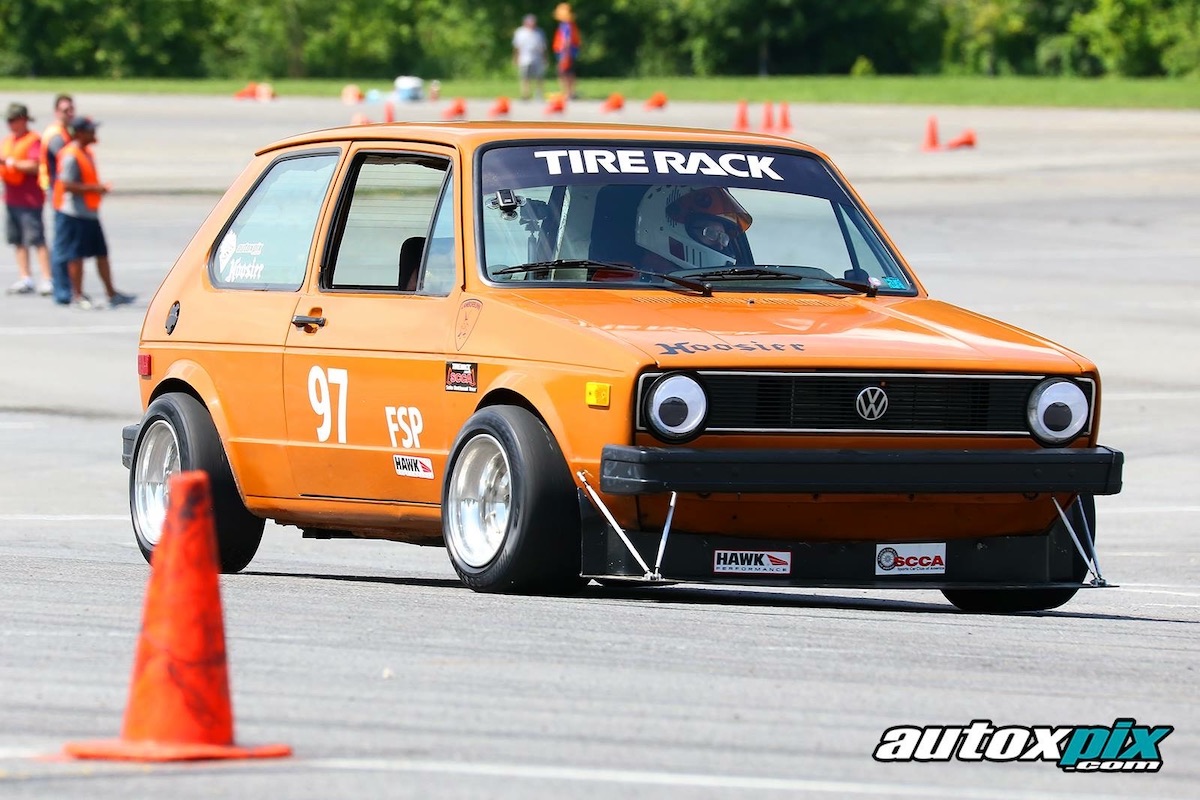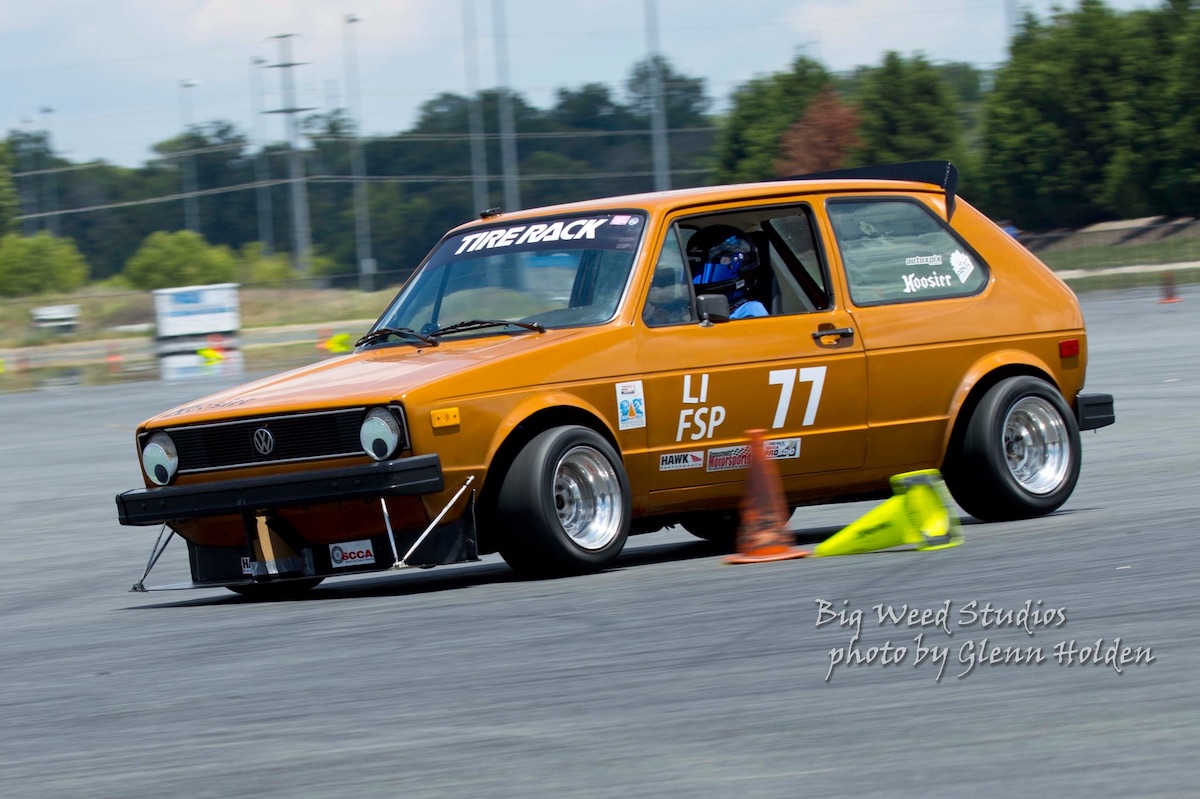Imagine the year. The year is 1975, and you’re a Volkswagen aficionado from the US. You’re also living through the oil crisis that reached its peak during the mid-1970s. Not only is fuel now scarce, it’s also now expensive.
By now, the classic VW - a Beetle, perhaps - that’s been in the family for a while is no longer that financially viable. Its aircooled motor is slow, noisy, and it’s inefficient. What’s more, the ‘Bug’ was now ageing. It had hardly changed since its post-war heyday. By now, those days were around 30 years prior.
So, what was suburban America supposed to buy? Well, the options were tricky in a gas-strapped USA. Buyers had the enviable choice of selecting between a huge, poorly-made, US-made gas-guzzler, or a Japanese-made ecobox which was superior on the fuel side of things, but still relatively underwhelming in terms of quality and performance.
When it launched, the revolutionary VW Rabbit showed US car makers that a car could be small yet advanced
Or were things that bad? Thanks to VW and its all-new Beetle replacement, the Rabbit (or ‘Golf’ if you’re European), the answer was a simple “no”.
When it launched in 1974, the Golf - or Rabbit as it was known as stateside - was the answer to US buyers’ conundrum. This small car had already taken Europe by storm. During its first year of production - VW had managed to shift 35,000 Golfs alone.
When the Rabbit hit US shores in 1975, VW’s replacement for the Beetle immediately hopped, skipped, and burrowed its way into the hearts of weary US buyers.
Just like what happened in Europe when VW launched the Golf, the tiny Giugiaro-designed car was like nothing seen before in the US. Its boxy, angular design captured the imagination of VW buyers in the US who mostly knew the air-cooled, rear wheel-drive, post-war VWs, which had become part of the social fabric of American society during the 1960s.
Compared to American cars at the time, the Rabbit was all-things European and sophisticated. It was also extremely advanced for its time.
At a time when US-made cars could take up half a state with their size alone, the Rabbit was a VW masterclass of less is more
What’s more, the Rabbit’s squat rear-end and smart front-wheel-drive layout meant that despite its compact dimensions, the little VW could easily accommodate five passengers and their luggage. It also weighed less than 1,000 kilograms; a far cry from the locally-manufactured land yachts at the time.
At this point in the story, it should come as no surprise that US-buyers who had previously been stuck with the choice of buying a US-made lemon or “Jap Crap” (this was the mid-’70s, remember - so there was still plenty of unwarranted prejudice towards Japan at the time on the back of World War II), the nimble, practical Rabbit was clearly the answer to their problem.
Oh, and did we mention the Rabbit’s party trick? Outstanding fuel economy, which can be largely attributed to VW’s range of small, watercooled, fuel-sipping, transverse-mounted engines.
Petrol motors started with the 1.1-litre engines, whilst the largest was the 1.8-litre motor fitted to the legendary Rabbit GTI. Relatively unheard of at the time, VW even sold Rabbits with a series of 1.5 litre, and 1.6-litre diesel engines.
The Rabbit’s miniscule thirst made it look like a member of the temperance movement. By nibbling away at its fuel, VW’s latest hit would give cash-conscious owners a remarkable 45 miles per-gallon at a time when domestic cars with their big, lumbering V8s, would return around 9mpg.
By the late 1970s, the VW Rabbit had burrowed its way into the hearts of an all-new, all-important younger demographic
If you’re a bit of a car nerd, you’ll know that the 1970s were a magical time for Volkswagen’s advertising department in North America. This was largely thanks to the Rabbit moniker, which gave them plenty of material.
By selecting the Rabbit moniker over the more teutonic-sounding Golf, younger US buyers were reminded of the twitchy-nosed, bob-tailed, cute and cuddly lagomorph we all know and love. After all, Golf was little more than a sport played by rich old dudes in Florida wearing bad trousers.
With its tongue-in-cheek marketing campaign, style, and superior fuel economy and build over domestic cars, the Rabbit was a surefire success in the US. Arguably, it was VW’s greatest hit in America, and cemented the US market’s love with the brand. Older buyers left heritage manufacturers for the better engineered German car. Most importantly though, the Rabbit saw a new, younger, hip and groovy generation flock to the VW brand.
As the VW Rabbit grew in desirability, it also gained a reputation as an affordable, entry-level race car
As the Rabbit bred like its namesake across North America, a type of motorsport called autocross was also gaining in popularity. Thanks to relatively reasonable costs and entry requirements, the Sports Car Club of America (SCCA) organised series was - and still is - one of the most affordable and popular types of club racing in the US.
With perfect weight distribution and a sub-1000kg mass, the Rabbit was the perfect autocross car. Its rigid chassis further contributed to autocross being able to tackle the series’ tarmac courses with aplomb. The engines, whilst not too powerful, also gave drivers the confidence to put the car’s power down safely in the knowledge that they wouldn’t lose control and spin out.
To this day, a fluffle of Rabbits made the mid-1970s to the early 1980s (when the VW Rabbit became known as the VW Golf) continues to hop, skip, and binky its way across the North American Autocross scene, with one particular car - a 1977 Rabbit Basic model - called ‘Lamborbunni’ leading the way.
Now, at Dyler.com, we’re fans of the Golf, especially the Rabbit. This isn’t just because it’s a landmark car in automotive history. We also happen to think that Rabbit just sounds nicer, especially for a small, cute car.
As you can expect then, when we were tipped off from a friend at VW about Lamborbunni, we decided to track down its owner, Geoff Zimmer, to find out more about his creation, which he has owned and continued to develop since 1996.
Thankfully, South Carolina-based Geoff - a lifelong VW enthusiast and somewhat of a Rabbit historian - was happy to join us online to talk about the joys of Rabbit ownership, and reveal the secrets of how after 45 years of existence, the Lamborbunni is still able to outperform much newer, much faster machinery in autocross.
Without further ado, this is Lamborbunni - the fastest Rabbit you’ve ever met.
Dyler.com: Geoff, thank you for taking the time to talk to us about the VW Rabbit and the Lamborbunni - where did your interest and love for this little car come from?
Geoff Zimmer:I grew up with aircooled VWs in my house, and I was tinkering with them from about age 8. The air cooled VW magazines started showing water cooled VWs like the Rabbit, and once the GTI came to the US, I just had to have one.
Dyler.com: Like the car owned by race driver and former Daytona 24 winner Randy Pobst, your Rabbit is a Basic model - can you explain the popularity of the entry-level Rabbit amongst autocross and hill-climb competitors over the GTI?
Geoff Zimmer: The early German built cars are lighter, and I think they are better built as well. Don’t forget that in 1979, VW started making the Rabbit at the now-closed VW factory in Westmoreland plant in Pennsylvania. I would say that now, early rust free Rabbits and Sciroccos may be even more rare than old Lamborghinis, and it’d be a challenge to find either VW in good shape. A Rabbit that’s been well-loved and taken care of will cost you from around $30,000 upwards today.
Dyler.com: How is a car that was made in 1976 still competitive, and do you think this can be said for all Rabbits in autocross and other forms of motorsport?
Geoff Zimmer: I think all Rabbits and Sciroccos can still be competitive depending on the rules you race under. The key to their success is a reasonable power to weight ratio due to their light weight, decent handling, and decent brakes. They are more than the sum of their parts. I like the fact that they are so easy to work on, and parts are so interchangeable among water cooled VWs. You can make a real hotrod for very little money.
Dyler.com: Where did the Lamborbunni idea come from?
Geoff Zimmer: My friend and co-driver, Steven Duckworth, came up with the name for our little team, and his friend Eric Hecht did the graphics. I’m not really sure what started it all, but it was all a bit of fun, to be honest. We even had some ‘Automobili Lamborbunni’ clothes made which we wore whilst spectating a race at Daytona. We were kind of worried that the official Lamborghini teams may have been offended by it in the future, but it turns out they weren’t. They really enjoyed the idea and our take on the logo!
Dyler.com: How much engineering work have you had to do to keep the Lamborbunni competitive over the last 25 years, and why did you downgrade the gearbox to a four-speed?
Geoff Zimmer: The engineering on the car is never ending. Over the years the rules in autocross have changed, and this has allowed me to fit the 1.8-litre, 16-valve engine and brakes from the Rabbit GTI to my car. Technology has developed too, so things like programmable fuel injection have become reasonably priced and increasingly reliable. From my side of things, my budget has grown over the years as I have progressed as a Maintenance Engineer in the steel industry. More money allows me to buy better parts. In the class that I race in, there is no minimum weight, but there are very strict rules that say what can and cannot be modified on the car. I am always striving to lose weight off of the car, since I can't seem to lose it off the driver!
Dyler.com: What is the secret behind keeping the Lamborbunni competitive after 44 years of life?
Geoff Zimmer: The car’s low-weight, that trademark reliability of early, classic VWs, plus using top quality parts and/or making components that cannot be purchased off the shelf. I actually love producing parts for the car, and I make everything myself except the shock absorbers, tyres, and limited slip differential. We are constantly tuning the car in small increments to make it easier to drive. The more comfortable the car is to drive fast, the more consistent you can be with your times!
Dyler.com: How much money do you think you have spent over the years to keep Lamborbunni competitive?
Geoff Zimmer: I wish I had the money for all of the parts that are no longer on the car! I have been through many sets of wheels, shock absorbers, and springs as technology has just got better. If I could find a rust free car to start with, I could duplicate this car for about $10,000.
Dyler.com: Amidst all of the championships and individual victories - including a title win for Randy Pobst, three national championships with Steven Duckworth, plus your PRO solo title - can you pick out your standout moment from the Lamborbunni's competitive career?
Geoff Zimmer: As you said, there are many! However, I am happiest when a top-level driver drives the car, and gets out grinning ear-to-ear. There is an autocross racer from Tennessee, Brian Johns, who had never driven a front wheel drive car because they just didn't interest him. He got out of the Lamborbunni just raving about it and laughing. The car should not be as much fun as it is!
Dyler.com: Speaking of racing drivers who are long-term fans of the Rabbit, how did you manage to convince Randy Pobst to compete in the Lamborbunni in the SCCA Solo Nationals event in 2018.
Geoff Zimmer: Randy also lives in the SouthEast United States, so I would run into him occasionally at races and other car events. In 2018, Steven - my co-driver I mentioned earlier - decided to autocross his Scion FRS in a spec class to see how he could do against other great drivers in equal cars. I didn’t have a co-driver for the national championships, so we mentioned this to a common friend while at Road Atlanta and the timing worked perfectly! Randy joined our little team, Lamborbunni, to replace me for the upcoming event at Lincoln Airpark. It was exactly 30 years since Randy had won his first Solo National championship in a '77 Rabbit Basic , so it really was something of a fairytale ending for all of us involved.
Dyler.com: What's the biggest 'giant' killing moment you have achieved in the Lamborbunni’s racing career?
Geoff Zimmer: There are times when my class is not well subscribed to at national events around the country, so the car is bumped up into a higher class that it should have no business competing in, and there have been times where we have done very well - for example, Steven won D Modified class one year in the Lamborbunni when driving against race-prepared Lotus 7s and other similar cars on slick tires.
Dyler.com: Which name do you prefer for the car - Golf or Rabbit? Would you like to see VW revive the Rabbit name?
Geoff Zimmer: The car has always been a Rabbit to me, even though I’m aware that it has always been a Golf elsewhere in the world, and it’s been a Golf in the US since 1985 when VW launched the MkII car, or the ‘A2’ in VW speak. Here’s a little known fact: VW brought back the Rabbit name back from 2006 to 2009 over here. Guess who owns one of those as a daily driver?!
Dyler.com: For our final question, we’d like to ask whether you’d ever sell the Lamborbunni. Is this something you’ve ever considered?
Geoff Zimmer: It would take a LOT of money for me to consider it. I doubt anyone would want to pay what she is worth to me!
Thanks to proper car people in this world like Geoff who treat their classic cars with the love and respect they deserve, don’t be surprised to see more classic VW Rabbit models like the Lamborbunni running for plenty more years to come in the future.
Click these words to keep up with the adventures of Lamborbunni by following the team’s official account on Instagram.
Meanwhile, if you are interested in buying your very own VW Rabbit or VW Golf, you can browse the cars we have available on Dyler.com by clicking here!
---
Find your dream car among our Car Categories!
 © autoxpix.com
© autoxpix.com

















